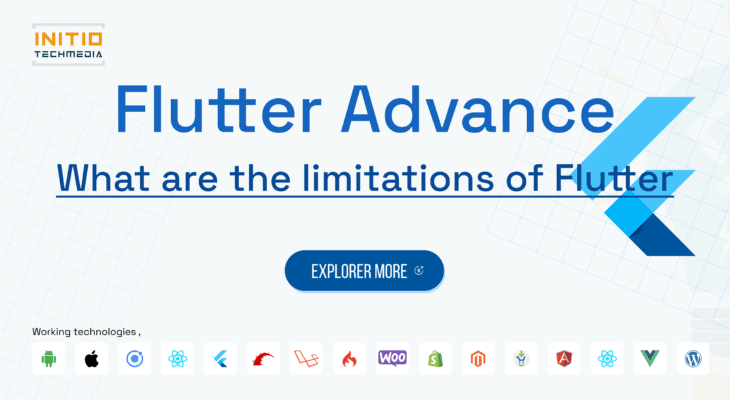Leading Mobile & web Development company which is providing Ready to publish apps & on demands application in Global Bussiness.
- 908, B Square 2, Ambli Rd, near Hotel Double tree Hilton, Vikram NagarAhmedabad-380054, Gujarat, India
- (+91) 8758432204Give us a call
- contact@initiotechmedia.com24/7 online support

What are the limitations of Flutter?
- payal patel
- April 26, 2023
- 0
Flutter is a popular open-source UI toolkit developed by Google, which enables developers to build high-performance and visually appealing mobile, desktop, and web applications. However, like any other software development tool, Flutter also has some limitations, which include:
Limited Native Functionality: Flutter is relatively new compared to other mobile app development platforms, which means it lacks some of the native functionalities that other platforms offer.
Large App Size: Flutter apps can have a larger size compared to native apps since they contain their own rendering engine and widgets.
Limited Library Support: Flutter has a relatively small library compared to other frameworks. While the number of available libraries is increasing, some libraries may not have the same level of functionality as their counterparts in other frameworks.
Learning Curve: Flutter is a relatively new technology, and the learning curve can be steep for developers who are not familiar with it.
Limited Plugin Support: Flutter has a limited number of plugins compared to other platforms, which may make it difficult to integrate certain functionalities into your app.
Limited IDE Support: Flutter is best used with Android Studio or VS Code, which may not be the preferred IDE for some developers.
Performance Issues: While Flutter is known for its high performance, it may not be suitable for complex apps or those that require a lot of processing power.
Overall, Flutter is a powerful and versatile development tool, but developers should be aware of its limitations before choosing it as their preferred framework.
WhatsApp us

